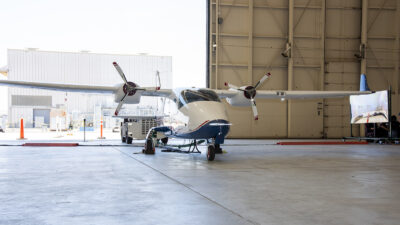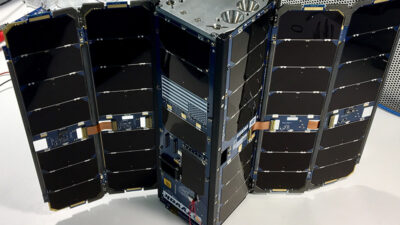Real-world applications, support for Starline test
By Paul Voss|December 2017
The Balloon Systems Technical Committee supports development and application of free-floating systems and technologies for buoyant flight in the stratosphere or atmospheres of other planets.
In 2017, balloon systems saw significant advances in navigation, station keeping and commercial application. Alphabet’s Project Loon used its stratospheric balloons to provide internet connectivity to tens of thousands of people in historic flooding around Lima, Chimbote and Piura, Peru. Working in collaboration with Telefonica, Loon balloons served people over a 40,000-square-kilometer area roughly the size of Switzerland and transferred about 160 gigabytes of data. In October, the FCC gave Project Loon permission to provide internet in Puerto Rico after Hurricane Maria devastated the island territory.
In February, Oregon-based Near Space Corp. supported a parachute system qualification test for Boeing’s new CST-100 Starliner spacecraft. The Starliner is being developed in collaboration with NASA to provide the United States with a crew space transportation system for servicing low Earth orbit destinations, such as the International Space Station. The test involved taking a representative test article (shape and mass) to an altitude of about 40,000 feet and releasing it on a programmer chute to achieve the same flight conditions the actual capsule would achieve on its return descent from orbit. The test used a custom, heavy-lift balloon and specialized ground equipment that provided a static launch of the spacecraft and allowed the balloon inflation to be carried out prior to being attached to the test article. Through additional balloon flights, Boeing will demonstrate the Starliner’s ability to land safely on land, a first for a U.S. space capsule.
Raven Aerostar balloons logged over 10,000 flight days in the stratosphere this year supporting research, development and operational objectives. In June, a 10-day flight demonstrated mid-latitude waypoint navigation and station seeking. Launched from Raven’s Flight Operations Center in South Dakota, the balloon navigated by wind shear to a target area in Oklahoma and then performed altitude changes to remain within 40 nautical miles of the target for three days. The balloon was then directed to a second target area in West Texas, traveling for two days and remaining within 30 nautical miles of the target for another day before being terminated.
Researchers at Smith College conducted two flights of their controlled meteorological balloons in Antarctica. The two 230-gram (payload mass) balloons flew for three and 6½ days respectively, with the later navigating 2,800 km across the continent from Aboa Station in Queen Maud Land to the Ross Ice Shelf and performing a controlled landing on the ice midway through the transit.
The NASA Balloon Program’s Antarctic campaign staged five flights from McMurdo Station. The three larger payloads (over 2,000 kilograms) each flew over 20 days, one flew for 30 days, and two were fully recovered this same season. NASA launched a 532,200-cubic-meter super pressure balloon in May from New Zealand that carried the Extreme Universe Space Observatory experiment. While the science mission was successful, the balloon performance was not optimal, and the mission was ended after 12 days through a controlled termination. The fall Fort Sumner, New Mexico, campaign was to include eight science and student payload flights. In March, the NASA Explorers Program selected the Galactic/Extragalactic Ultralong-Duration Balloon Spectroscopic Terahertz Observatory to fly a 100-day-plus super pressure balloon mission in 2021 from Antarctica.
World View accelerated development and testing of its Stratollite vehicle, a long-duration stratospheric balloon designed for commercial payloads up to 50 kilograms. To date, World View has demonstrated altitude control, steering and station-keeping on multiple Stratollite missions, all carrying a variety of commercial and government payloads. In October, World View celebrated the opening of its new stratospheric launch facility, Spaceport Tucson, and 13,200-square-meter global headquarters, housing balloon manufacturing, mission control and research.
Contributors: Debbie Fairbrother (NASA), Tim Lachenmeier (Near Space Corp.), Matt Mulhern (Alphabet), Sebastian Padilla (World View) and Mike Smith (Raven Aerostar)



































